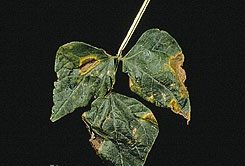

Springer, Berlin, pp 41–76Ĭhen XH, Vater J, Piel J, Franke P, Scholz R, Schneider K, Koumoutsi A, Hitzeroth G, Gramme N, Strittmatter AW, Gottschalk G et al (2006) Structural and functional characterization of three polyketide synthase gene clusters in Bacillus amyloliquefaciens FZB42. In: Maheshwari D (ed) Bacteria in agrobiology: plant growth responses. J Plant Pathol Microbiol 8:403īorriss R (2011) Use of plant-associated Bacillus strains as biofertilizers and biocontrol agents in agriculture. phaseoli) of beans with special focus on ethiopian condition. Malays J Med Biol Res 2:147–152īelete T, Bastas KK (2017) Common bacterial blight ( Xanthomonas axonopodis pv. Phaseoli) of common bean ( Phaseolus vulgaries) in Kaffa, Southwest Ethiopia. Crop Prot 28(10):807–811īelachew K, Gebremariam M, Alemu K (2015) Integrated management of common bacterial blight ( Xanthomonas axonopodis pv. J Plant Pathol 80(3):251īalestra GM, Heydari A, Ceccarelli D, Ovidi E, Quattrucci A (2009) Antibacterial effect of Allium sativum and Ficus carica extracts on tomato bacterial pathogens. Phytopathol 73:1148–1152īalestra GM, Antonelli MG, Fabi A, Varvaro L (1999) Effectiveness of natural products for in vitro and in vivo control of epiphytic population of Pseudomonas syringae pv. Fall SJ (1983) Inhibitory effect of Bacillus subtilis on Uromyces phaseoli and on development of rust pustules on bean leaves. Am J Phytomed Clin Ther 6:1:3īaker SC, Stavely JR, Thomas CA, Sasser M, Mac. CAB International, Wallingford, pp 1–61Īrarsa L, Fikre L, Getachew A (2018) Evaluation of integrated management of common bacterial blight of common bean in Central Rift Valley of Ethiopia.

In: Allen DJ, Lenne JM (eds) The pathology of food and pasture legumes. Crop Prot 74:70–76Īllen DJ, Lenne JM (1998) Disease as constraints to production of legumes in agriculture. Can J Plant Pathol 36(2):170–178Ībbasi PA, Weselowski B (2015) Efficacy of Bacillus subtilis QST 713 formulations, copper hydroxide, and their tank mixes on bacterial spot of tomato. Results suggest that integrated management with biocontrol agents is the best strategy for effective control of CBB in sustainable and organic agriculture.Ībbasi PA, Weselowski B (2014) Influence of foliar sprays of Bacillus subtilis QST 713 on development of early blight disease and yield of field tomatoes in Ontario. In addition, the lowest bacterial population per gram of fresh weight of leaves was recorded in plants that had been treated with the mix treatments followed by str. QST 713 showed a reduction of the infection rate by 51.21 and 40.36%, and the disease incidence by 53 and 52.25%, respectively. QST 713 and CH alone compared to control treatments. The lowest disease severity, incidence and AUDPC were observed from the mix applications with str. The disease severity, disease infection rate, AUDPC and disease incidence were significantly reduced over the control treatment. The 2nd and 3rd time treatment applications were applied every 7 days after bacterial inoculation. phaseoli (Xap) was used to inoculate 21-day-old plants after 3 days of first-time treatment applications. A concentration of 10 8 CFU mL − 1 for Xanthomonas axonopodis pv. QST 713 against CBB in a susceptible bean cultivar in comparison with copper hydroxide (CH) and its mixes.

A greenhouse experiment was conducted to assess the effectiveness of foliar sprays of Bacillus subtilis str. Chemical compounds, which are used on beans to manage common bacterial blight (CBB) disease, cause serious damage to natural ecosystems and often fail to control CBB.


 0 kommentar(er)
0 kommentar(er)
